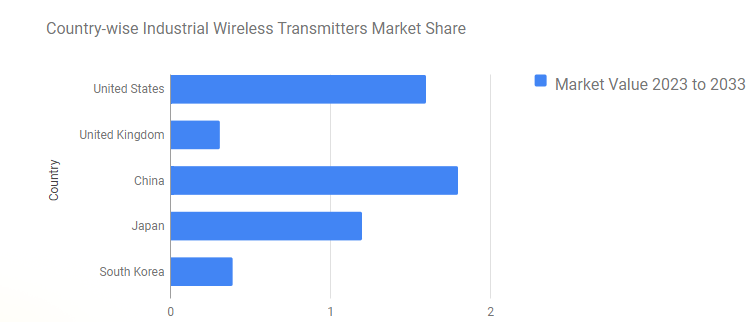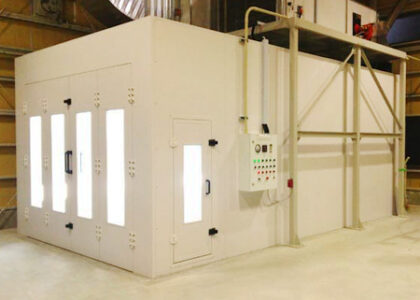Industrial facilities hum with activity, but ensuring smooth operation relies on efficient communication between various machines and control systems. In this symphony of data, industrial wireless transmitters play a vital role, transmitting critical information wirelessly, eliminating the need for cumbersome cables. The industrial wireless transmitter market, driven by the increasing demand for operational flexibility and data accessibility, is experiencing significant growth. Let’s explore the diverse applications of these transmitters and delve into the factors propelling this dynamic market.
Cutting the Cord: Applications of Industrial Wireless Transmitters
Industrial wireless transmitters offer a versatile solution for data transmission across various industrial settings:
- Process Monitoring and Control: These transmitters wirelessly transmit data from sensors monitoring pressure, temperature, flow rate, and other crucial process parameters. This real-time data enables operators to make informed decisions and optimize production processes.
- Inventory Management: Wireless transmitters can be integrated with inventory tracking systems, providing real-time data on material levels in storage tanks, silos, or pipelines. This helps optimize inventory control and prevent stockouts.
- Remote Asset Monitoring: In remote or hazardous locations, wireless transmitters enable condition monitoring of critical assets like pumps, motors, and bearings. This allows for preventative maintenance and reduces the risk of unexpected downtime.
- Machine-to-Machine Communication: As industrial facilities become more automated, wireless transmitters facilitate communication between machines, enabling them to share data and coordinate operations seamlessly.
- Environmental Monitoring: Wireless transmitters can be used to monitor environmental parameters like air quality, noise levels, and radiation in industrial settings, ensuring worker safety and compliance with regulations.
Get Exclusive Sample Copy of the Report: https://www.futuremarketinsights.com/reports/sample/rep-gb-17939
A Market Freed from Wires: Growth Factors
The industrial wireless transmitter market is experiencing a surge in popularity driven by several key trends:
- Rising Demand for Operational Flexibility: Wireless transmitters eliminate the need for complex cable installations, offering greater flexibility for equipment placement and system reconfiguration. This is particularly beneficial for facilities with frequent layout changes or challenging environments.
- Industrial Internet of Things (IIoT): The rise of IIoT necessitates reliable wireless communication for connecting sensors, machines, and control systems. Industrial wireless transmitters play a crucial role in this connected industrial ecosystem.
- Focus on Data Accessibility: Real-time data from wireless transmitters empowers data-driven decision making, process optimization, and improved overall efficiency.
- Advancements in Wireless Technologies: Developments in technologies like Bluetooth Low Energy (BLE) and WirelessHART offer increased range, reliability, and security for industrial wireless communication.
- Growing Cost-Effectiveness: As wireless technology matures, the cost of industrial wireless transmitters is decreasing, making them a more accessible solution for a wider range of applications.
According to a Future Market Insights (FMI) report, the industrial wireless transmitters market is forecasted to be valued at USD 9.2 Billion in 2033 the market is expected to advance at a CAGR of 6.4% from 2023 to 2033. The current market valuation is USD 4.9 Billion in 2023.

Challenges
The industrial wireless transmitter market also faces some challenges:
- Security Concerns: Ensuring secure data transmission in an industrial wireless environment is crucial. Implementing robust security protocols is essential to protect sensitive information.
- Radio Frequency Interference: In facilities with congested radio frequency (RF) environments, potential interference can disrupt communication. Careful selection of wireless technologies and channel management strategies are necessary.
- Limited Range: The range of wireless transmitters can vary depending on the technology used. Understanding application requirements and choosing transmitters with appropriate range capabilities is crucial.
- Integration with Existing Systems: Integrating wireless transmitters with existing wired infrastructure might require additional equipment or system modifications.
Get Full Report Now: https://www.futuremarketinsights.com/checkout/17939

